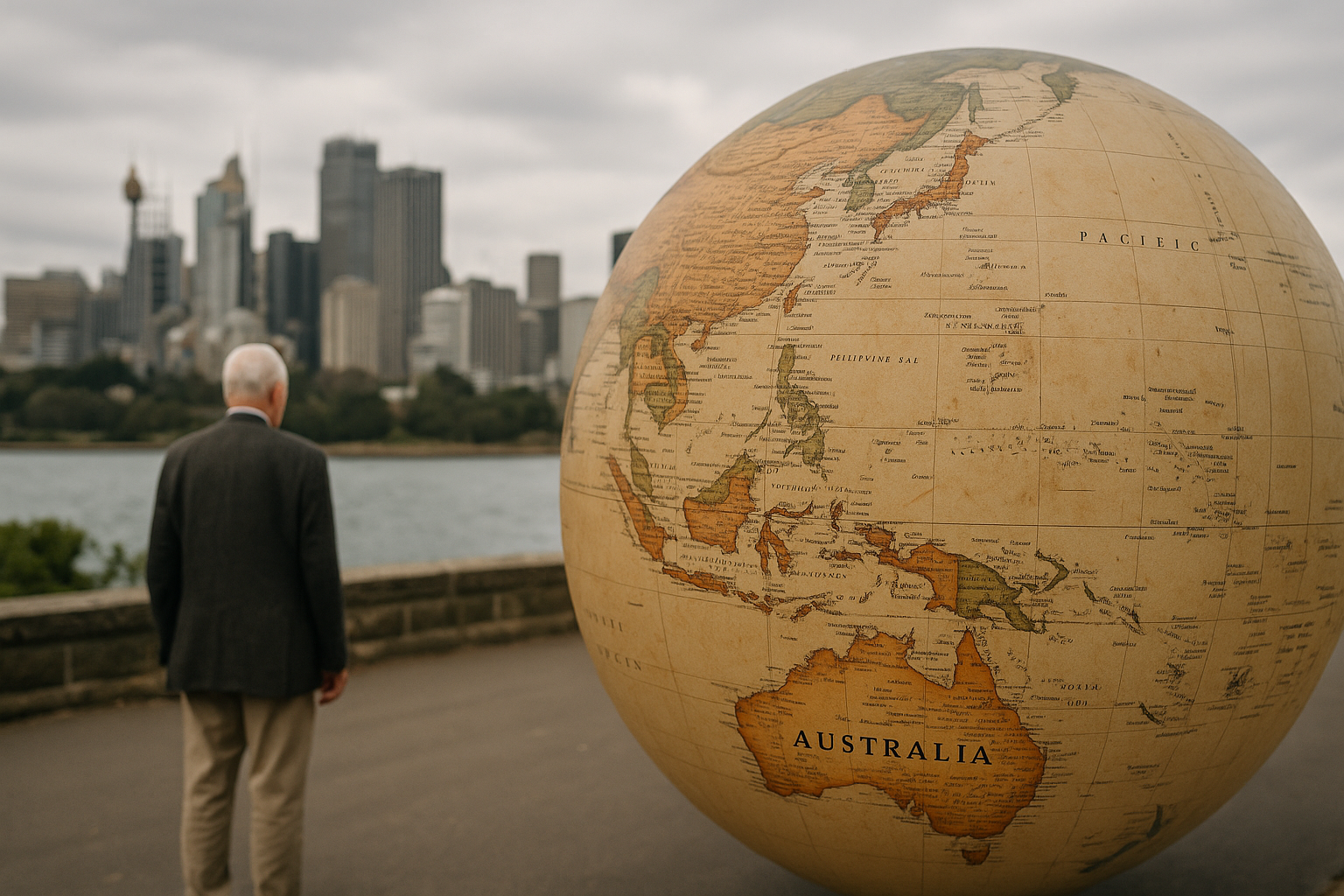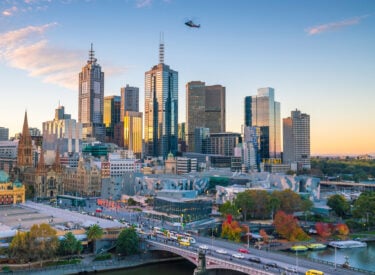
Key takeaways
For decades, we’ve worried about overpopulation, but the real issue ahead is depopulation.
Global fertility rates are falling, and the UN’s projection of a population peak around 10.4 billion in the 2080s may be too high. Some forecasts suggest the decline could begin as early as the 2060s — within a single lifetime.
Australia’s fertility rate sits at around 1.4 — well below the replacement rate of 2.1. The reasons are multifaceted: high housing costs, expensive childcare, and delayed family formation.
Australia has long relied on skilled migration to fuel growth, but as populations age worldwide, the pool of potential migrants will shrink.
In the coming decades, countries may compete for young workers — even offering incentives instead of visa fees. To stay ahead, Australia must strengthen its appeal through housing affordability, education, stability, and lifestyle.
A declining population reshapes economies, consumption patterns, and communities.
Demand for housing, goods, and resources will evolve — with major cities remaining strong while some regional areas may struggle.
Smaller households, aging populations, and new social dynamics will redefine urban design and investment strategies.
Investors should continue focusing on areas with enduring population and economic growth — primarily the inner and middle suburbs of major capital cities.
For decades, we’ve been told to fear a population explosion, that there are too many people on the planet - straining our resources, overcrowding our cities, and destroying the environment.
But what if the real problem of the future isn’t too many people… but too few?
It’s a fascinating shift in thinking, and one that could redefine the way we live, work, invest, and grow wealth.
While Australia has been riding a wave of population growth in recent years, that tide could turn sooner than most realise.
Global fertility rates are collapsing, migration will become more competitive, and whole economies could soon find themselves managing decline rather than growth.
So, what happens to a country like Australia, a nation built on steady population expansion, when the world’s population starts to shrink?
To explore this, leading demographer Simon Kuestenmacher shared some fascinating insights in our latest Demographics Decoded episode that every investor, policymaker, and business leader should understand.
For weekly insights subscribe to the Demographics Decoded podcast, where we will continue to explore these trends and their implications in greater detail.
Subscribe now on your favourite Podcast player:
The coming global population peak
The United Nations projects that the global population will peak at around 10.4 billion people in the 2080s before gradually declining.
But Simon warns that this “official” projection is likely on the optimistic side.
“The UN has always been the gold standard for global population forecasts,” Simon said, “but they’ve also consistently overestimated how many babies we make.”
He points to research from the Wittgenstein Centre in Vienna, which expects the peak to arrive about a decade earlier, possibly in the 2070s and at a lower number, perhaps even below 10 billion.
Some demographers go further still, predicting that the population could start shrinking in the 2060s.
Why? Because birth rates are falling almost everywhere, and there’s no sign that trend will reverse.
Simon explained that “for all intents and purposes, we’ll see growth for another 50 to 60 years globally, and from then onwards, we’ll begin to decline.” That may seem distant, but demographically speaking, it’s around the corner.
The 2060s are as far ahead as the 1970s are behind, a single lifetime. And I remember the 1970s well.
The fertility freefall
The fertility rate needed to maintain a stable population is 2.1 children per woman.
Most advanced economies, including Australia, now sit well below that.
In Australia, it’s around 1.4, meaning without migration, our population would already be shrinking.
Some countries are far lower, Simon notes that in South Korea, “a few cities have fertility rates as low as 0.6. That means, statistically speaking, women aren’t even replacing themselves.”
So, why are people having fewer children?
It’s a complex web of factors: urbanisation, education, delayed marriage, economic pressures, and a general shift in priorities.
In Australia, the cost of living and housing affordability play an outsized role.
“Housing costs are high, and childcare is expensive,” Simon explained. “That particularly stops families from adding a second or third child.”
It’s not that Australians don’t want children; it’s that raising them feels financially out of reach.
And while some policymakers cling to the idea of “baby bonuses” or incentives, Simon is blunt about their effectiveness.
He argues that Peter Costello’s much-lauded baby bonus in the 2000s didn’t actually cause a surge in births; optimism did.
“People make more babies when they feel confident about the future,” he said. “The mini baby boom of 2007–2008 wasn’t because of the bonus; it was because of the mining boom. Everyone felt richer and more secure.”
That’s a profound insight.
If you want to increase birth rates, you don’t need cash handouts; you need confidence.
You need young families to feel the economy is strong, their jobs are secure, and they have a bright future ahead. That optimism, not government cheques, drives demographic vitality.
The migration dilemma: competing for people
For decades, Australia has used immigration to offset low fertility, and it’s worked beautifully.
Skilled migrants have kept our workforce young, dynamic, and globally competitive.
But Simon warns that this safety valve won’t stay open forever.
“If the world shrinks,” he said, “we’ll find it harder to attract migrants. There will be more competition for people.”
The key issue is that migration relies on a global pool of 18- to 39-year-olds, the working-age group most likely to move countries.
And that global cohort is already plateauing and could start shrinking within a decade.
Simon believes this will radically change migration policy worldwide.
“In 10 or 15 years, we might stop charging migrants visa fees and start handing out free visas or even tax credits to attract them,” he predicted.
Imagine that - countries competing for migrants, not restricting them.
It’s a demographic arms race, and Australia will need to position itself as one of the most desirable destinations on the planet.
The good news? We’re well placed.
“Australia will remain democratic, stable, and rich,” Simon said. “Even in a shrinking planet, we’re still small enough to grow.”
That means we can continue expanding, but only if we stay attractive. That requires smart immigration policy, affordable housing, world-class education, and a high quality of life.

The economic ripple effects
If fewer people are born, fewer people consume, and that means global demand for goods, housing, and resources will eventually fall.
For a country like Australia, heavily dependent on exports of minerals and food, that’s a potential concern.
But Simon’s take is more measured:
“Population growth continues for another 50 to 60 years,” he said. “And as the world grows richer, per capita consumption rises. The key question is who we’re selling to, the overall number of humans, or the relatively wealthy ones.”
Even in a shrinking world, there will be a growing global middle class, especially in parts of Asia and Africa. That means ongoing demand for Australian commodities, education, technology, and food exports.
However, regional Australia could face challenges.
As younger people leave and farms consolidate, many rural towns will age and decline unless they reinvent themselves.
“Regional cities are aging faster,” Simon noted. “As farms get bigger and more automated, fewer workers are needed. Some towns will shrink unless they find new reasons to exist.”
This reinforces a key theme I often discuss with investors: stick to areas of long-term population and economic growth, primarily the major capital cities and inner-middle-ring suburbs that attract skilled migrants and knowledge-economy jobs.
A changing social fabric
Demographic decline doesn’t just change economies, it changes relationships.
“Large families are becoming rare,” Simon said. “A family with three kids is now considered big.”
Smaller families mean fewer cousins, fewer intergenerational households, and a greater reliance on friends rather than relatives.
For migrants, like Simon himself, those networks often become chosen families.
“My wife and I are Germans living in Melbourne with no relatives here,” he explained. “We fully rely on friendship networks, and that changes social dynamics.”
These shifts subtly reshape communities.
They influence how we design housing, childcare, aged care, and even how we invest. Smaller households mean more single-person dwellings, more urban apartments, and evolving demand across the property market.
Will fewer people save the planet?
Some argue that a shrinking global population is good news for the environment.
But Simon cautions against oversimplifying the issue.
“It depends on your view of humanity,” he said. “If you think humans are a cancer on the planet, fewer people is a win. But if you think humans are the height of civilisation, it’s a loss.”
Either way, fewer people won’t automatically mean fewer emissions.
The problem isn’t just how many people exist, it’s how much each consumes.
Wealthy societies can have massive environmental footprints even as their populations shrink.
So, the real challenge is achieving sustainable prosperity, continuing to innovate and live well without depleting resources.
Technology to the rescue?
Can artificial intelligence, robotics, and automation offset the decline in workers?
Possibly.
“It’s utterly thinkable,” Simon said, “that we could create technology that lets us run the economy with far fewer people.”
That’s the optimistic view, that automation will boost productivity and prosperity even as populations contract.
But it will also require abundant, cheap, renewable energy and careful management to avoid social inequality between those who benefit from technology and those who don’t.
In the best-case scenario, we could build a world where fewer humans live better, healthier, and more meaningful lives, supported by technology that enhances productivity and reduces drudgery.
What should Australia do now?
So what’s the big takeaway for Australia?
Simon is clear:
“We need a long-term demographic national strategy,” he said. “If our business model depends on population growth, we need to ask: are we okay with shrinking, or do we compete harder for migrants?”
That strategy should include:
- Smarter migration policy – targeting young, skilled, globally mobile workers.
- Family-friendly reforms – affordable childcare, flexible work, and accessible housing.
- Technological investment – using automation to boost productivity.
- National optimism – building confidence in Australia’s economic and social future.
He offers a compelling analogy:
“Look at Japan,” Simon said. “The country has been shrinking for 35 years, but Tokyo keeps growing. The world may decline while Australia continues to grow, just like Tokyo in Japan.”
That’s an image worth holding onto, a resilient, forward-looking Australia thriving even as the world around it contracts.
The big picture
Demographic change is slow-moving, but its effects are monumental.
A shrinking world population could reshape everything from global trade to urban design, social policy, and intergenerational wealth.
For property investors, it reinforces a truth I’ve always believed: the best investment decisions are made with a long-term lens.
At Metropole, when we help clients build wealth, we don’t think six months ahead; we think 15 or 20 years ahead, aligning our strategies with enduring demographic and economic trends.
Because that’s how you build real, sustainable, intergenerational wealth.
The coming century will test how well nations and individuals adapt to a world where growth isn’t guaranteed.
But as Simon so insightfully put it:
“Even in a shrinking planet, Australia can thrive, if we’re smart with migration, technology, and community.”
And that’s a future worth planning for.
If you found this discussion helpful, don't forget to subscribe to our podcast and share it with others who might benefit.
Subscribe now on your favourite Podcast player:














